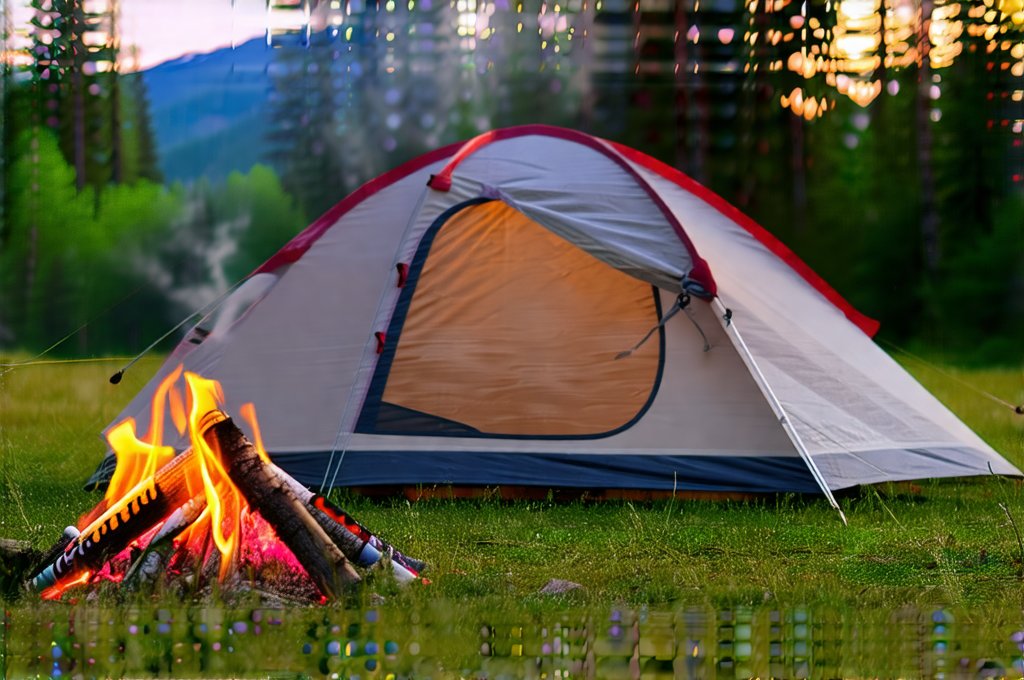Camping is often envisioned as a peaceful retreat into nature – crackling campfires, starry nights, and the soothing sounds of the wilderness. However, for individuals managing chronic conditions like inflammatory bowel disease (IBD), arthritis, autoimmune disorders, or even severe allergies, this idyllic picture can be complicated by the potential for flare-ups. These unexpected surges in symptoms can quickly transform a relaxing getaway into an uncomfortable ordeal, prompting anxiety and potentially derailing the entire experience. Understanding how to proactively manage these flares while enjoying the outdoors requires careful planning, preparation, and a willingness to adapt.
The key is not necessarily avoiding camping altogether, but rather approaching it with a mindful strategy that prioritizes well-being alongside enjoyment. This involves recognizing your personal triggers, packing essential supplies beyond the standard camping gear, having a contingency plan for escalating symptoms, and being honest with yourself (and your camping companions) about your limitations. It’s about empowering yourself to navigate potential challenges so you can still experience the restorative benefits of nature without compromising your health. A successful camping trip with chronic illness isn’t about eliminating risk – it’s about mitigating it intelligently and confidently.
Proactive Planning & Preparation
Preventing a flare-up, or at least minimizing its severity, starts long before you even pack your tent. Thorough planning is paramount. This begins with honestly assessing your current health status and recent symptom patterns. Is this a good time to go camping based on how you’ve been feeling? Are there any known environmental triggers that might exacerbate your condition – pollen counts, humidity levels, specific types of vegetation? Researching the campsite itself can also be beneficial; are there accessible restrooms, reliable water sources (for hydration and medication), and cell service in case of emergencies?
Beyond health assessment, meticulous packing is crucial. This isn’t just about bringing extra medications or supplies related to your condition; it’s about anticipating potential complications. Consider a comprehensive first-aid kit tailored to your specific needs, not just the standard cuts and scrapes. Pack comfortable clothing that doesn’t restrict movement, layers for fluctuating temperatures, and appropriate footwear. Think about food preparation – can you bring pre-prepared meals or snacks to avoid dietary triggers? And importantly, inform your camping companions about your condition and what they can do to support you if a flare occurs. If you are worried about UTIs, it may be useful to read handle UTI risk information before you go.
Finally, establish clear expectations. Camping with a chronic illness may mean adjusting activities or shortening the trip. Don’t feel pressured to keep up with others if it compromises your well-being. It’s perfectly acceptable – and often necessary – to prioritize rest and self-care. Remember that a modified camping experience is still a valuable one.
Managing Symptoms On The Trail
Once you’re at the campsite, staying attuned to your body is essential. Pay attention to early warning signs of a flare-up – subtle changes in energy levels, increased pain or discomfort, digestive upset, skin reactions, or emotional shifts. Addressing these symptoms promptly can often prevent them from escalating into full-blown flares. This might involve taking medication immediately, adjusting your activity level, hydrating more frequently, or finding a quiet space to rest.
Don’t underestimate the power of preventative measures. For example, if you know that strenuous activity triggers your arthritis, opt for shorter hikes with frequent breaks. If pollen allergies are a concern, wear a mask and consider camping during seasons with lower pollen counts. Maintain consistent routines as much as possible – regular meal times, medication schedules, and sleep patterns can all help stabilize your condition. And remember to stay hydrated; dehydration can often worsen symptoms across a wide range of conditions.
Crucially, avoid the temptation to “push through” discomfort. Listen to your body’s signals and respect its limits. A small rest break or adjustment to your plans is far preferable to a debilitating flare-up that ruins your trip and potentially requires medical intervention. If you are planning on camping, be sure to read about prevent cystitis while camping or hiking.
Recognizing Early Warning Signs
Recognizing early warning signs of a flare-up is perhaps the most powerful tool you have for managing symptoms while camping. These aren’t always dramatic; they can be subtle shifts in how you feel.
- Fatigue: An unusual or sudden increase in tiredness, even after adequate sleep, could signal an impending flare.
- Increased Pain/Discomfort: A slight return of familiar pain or discomfort, even if mild, warrants attention. Don’t dismiss it as “just a little ache.”
- Digestive Changes: Bloating, gas, changes in bowel habits, or nausea can be early indicators for those with IBD or other digestive conditions.
- Skin Reactions: Itching, redness, or the appearance of hives could indicate an allergic reaction or flare-up of a skin condition like eczema.
- Emotional Shifts: Increased anxiety, irritability, or a sense of overwhelm can sometimes precede physical flares.
Responding to these early signs doesn’t necessarily mean stopping your activity altogether; it might simply involve slowing down, taking a break, adjusting your diet, or taking preventative medication. The goal is to intervene before symptoms escalate and become more difficult to manage.
Hydration & Nutrition Strategies
Maintaining adequate hydration and nutrition are foundational for managing chronic conditions – and even more so when camping. Dehydration can exacerbate many symptoms, from fatigue and headaches to digestive upset and skin irritation.
- Carry Water: Always carry a sufficient supply of water with you on hikes or during activities. Consider a hydration pack or reusable water bottles.
- Electrolyte Replacement: If you’re sweating heavily, replenish electrolytes lost through sweat with electrolyte tablets or drinks.
- Pack Smart Snacks: Choose snacks that are easy to digest and provide sustained energy – trail mix (with modifications for allergies), granola bars, dried fruit, or nut butter packets.
- Dietary Considerations: Bring pre-prepared meals or ingredients that align with your dietary needs and avoid potential triggers. If you have food allergies, be extra cautious about cross-contamination when preparing meals outdoors.
- Avoid Overindulgence: While camping is often associated with treats like s’mores, it’s important to moderate consumption of sugary or processed foods, which can sometimes exacerbate symptoms.
Contingency Planning & Emergency Preparedness
Despite your best efforts, a flare-up may still occur. Having a contingency plan in place will help you navigate the situation calmly and effectively. This includes:
- Medication Access: Ensure easy access to all necessary medications, including emergency medication (like epinephrine pens for allergies).
- Communication Plan: Inform your camping companions about your condition and what they can do if a flare occurs. Share your emergency contact information with them.
- Evacuation Strategy: Know how to get back to civilization quickly if needed. Identify the nearest hospital or medical facility, and understand cell service availability in the area.
- Emergency Contacts: Have a list of important phone numbers readily available – doctor’s office, emergency services, family members.
- Insurance Information: Carry your health insurance card and any relevant medical documentation with you. If you are traveling abroad, it is wise to read about kidney stone handling while overseas.
Ultimately, camping with a chronic illness is about adapting, prioritizing self-care, and embracing the spirit of adventure while remaining mindful of your body’s needs. It requires preparation, flexibility, and a willingness to adjust plans as needed. But with careful planning and a proactive approach, you can still enjoy the beauty and restorative benefits of the outdoors – even with chronic health challenges.





















